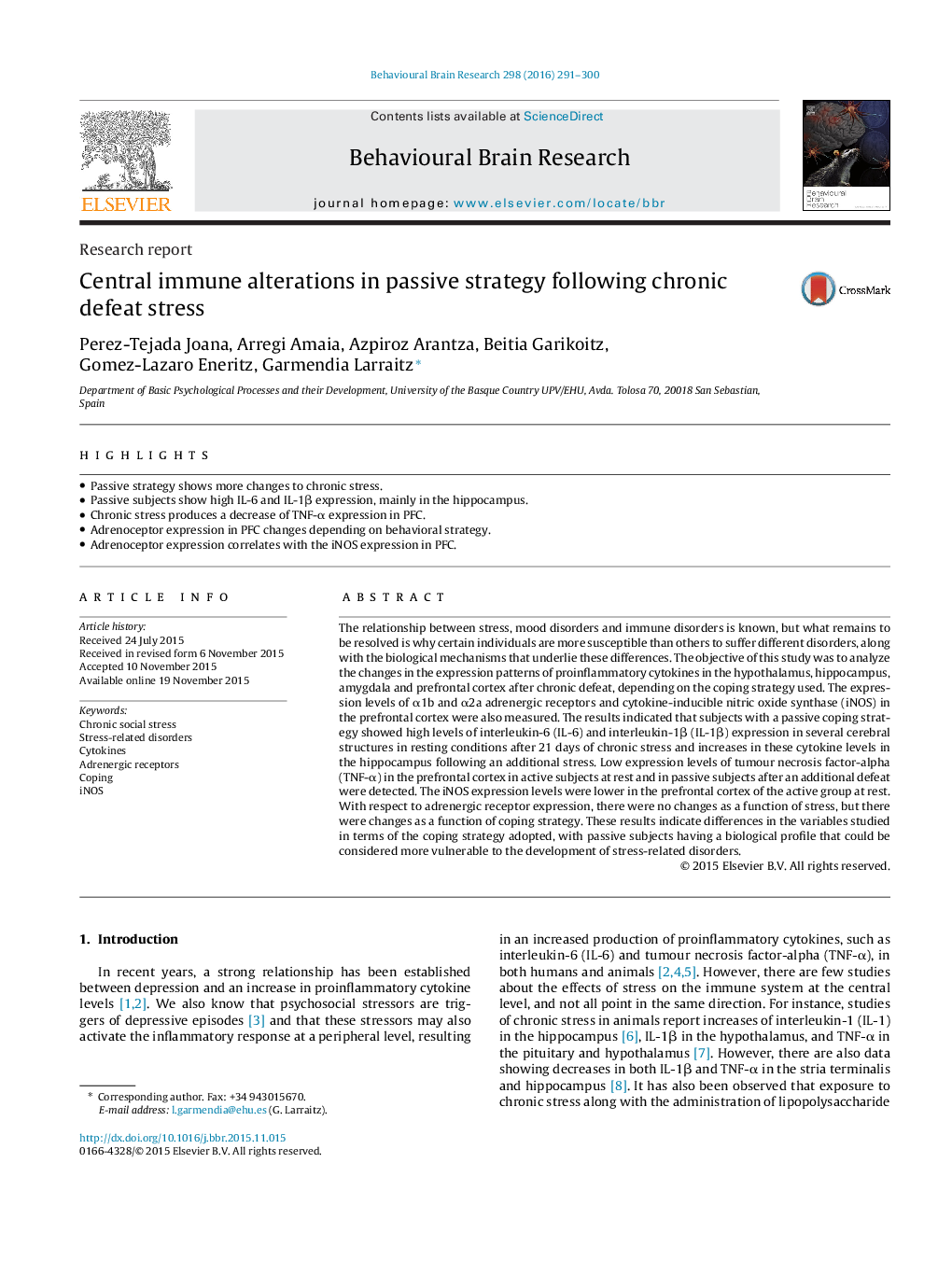| کد مقاله | کد نشریه | سال انتشار | مقاله انگلیسی | نسخه تمام متن |
|---|---|---|---|---|
| 6256317 | 1289914 | 2016 | 10 صفحه PDF | دانلود رایگان |
- Passive strategy shows more changes to chronic stress.
- Passive subjects show high IL-6 and IL-1β expression, mainly in the hippocampus.
- Chronic stress produces a decrease of TNF-α expression in PFC.
- Adrenoceptor expression in PFC changes depending on behavioral strategy.
- Adrenoceptor expression correlates with the iNOS expression in PFC.
The relationship between stress, mood disorders and immune disorders is known, but what remains to be resolved is why certain individuals are more susceptible than others to suffer different disorders, along with the biological mechanisms that underlie these differences. The objective of this study was to analyze the changes in the expression patterns of proinflammatory cytokines in the hypothalamus, hippocampus, amygdala and prefrontal cortex after chronic defeat, depending on the coping strategy used. The expression levels of α1b and α2a adrenergic receptors and cytokine-inducible nitric oxide synthase (iNOS) in the prefrontal cortex were also measured. The results indicated that subjects with a passive coping strategy showed high levels of interleukin-6 (IL-6) and interleukin-1β (IL-1β) expression in several cerebral structures in resting conditions after 21 days of chronic stress and increases in these cytokine levels in the hippocampus following an additional stress. Low expression levels of tumour necrosis factor-alpha (TNF-α) in the prefrontal cortex in active subjects at rest and in passive subjects after an additional defeat were detected. The iNOS expression levels were lower in the prefrontal cortex of the active group at rest. With respect to adrenergic receptor expression, there were no changes as a function of stress, but there were changes as a function of coping strategy. These results indicate differences in the variables studied in terms of the coping strategy adopted, with passive subjects having a biological profile that could be considered more vulnerable to the development of stress-related disorders.
Journal: Behavioural Brain Research - Volume 298, Part B, 1 February 2016, Pages 291-300
